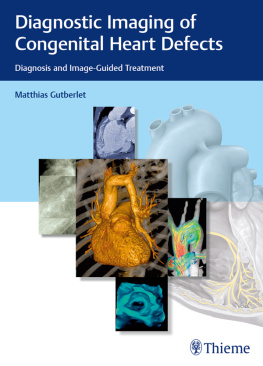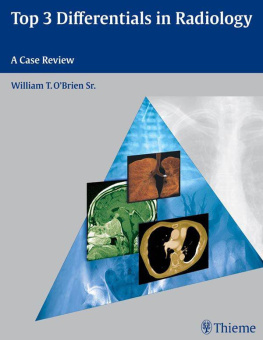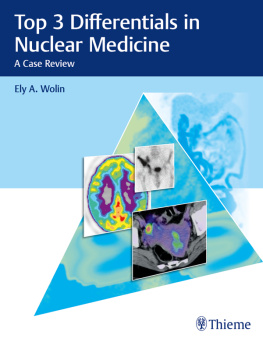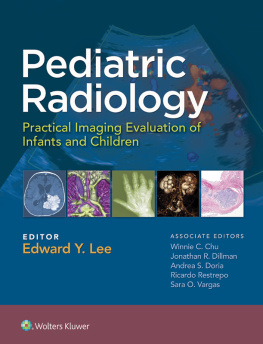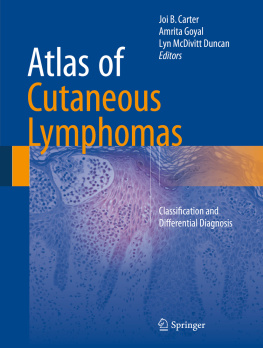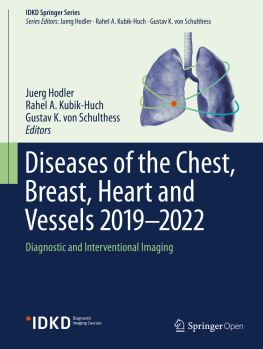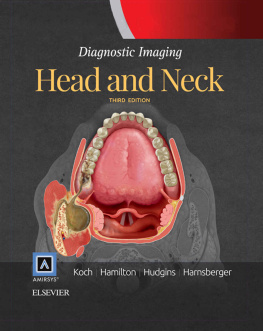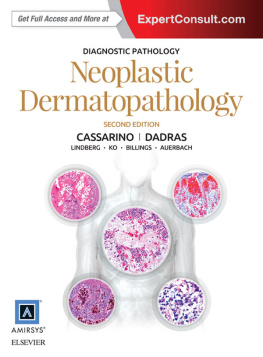ExpertDDX: Chest
SECOND EDITION
Brett W. Carter, MD
Director of Clinical Operations
Chief Patient Safety and Quality Officer
Diagnostic Imaging
Associate Professor, Thoracic Imaging, The University of Texas MD Anderson Cancer Center, Houston, Texas
Melissa L. Rosado-de-Christenson, MD, FACR
Section Chief, Thoracic Radiology, Department of Radiology, Saint Lukes Hospital of Kansas City
Professor of Radiology, University of Missouri-Kansas City School of Medicine, Kansas City, Missouri
John P. Lichtenberger, MD
Associate Professor of Radiology, The George Washington University School of Medicine
Chief of Thoracic Radiology, Department of Radiology, The George Washington University Hospital, Washington, DC
Santiago Martnez-Jimnez, MD
Department of Radiology, Saint Lukes Hospital of Kansas City, Kansas City, Missouri
Table of Contents
Copyright
Elsevier
1600 John F. Kennedy Blvd.
Ste 1800
Philadelphia, PA 19103-2899
EXPERTDDX: CHEST, SECOND EDITION
ISBN: 978-0-323-52482-7
Inkling: 9780323568555
Copyright 2020 by Elsevier. All rights reserved.
No part of this publication may be reproduced or transmitted in any form or by any means, electronic or mechanical, including photocopying, recording, or any information storage and retrieval system, without permission in writing from the publisher. Details on how to seek permission, further information about the Publishers permissions policies and our arrangements with organizations such as the Copyright Clearance Center and the Copyright Licensing Agency, can be found at our website: www.elsevier.com/permissions.
This book and the individual contributions contained in it are protected under copyright by the Publisher (other than as may be noted herein).
Notices
Practitioners and researchers must always rely on their own experience and knowledge in evaluating and using any information, methods, compounds or experiments described herein. Because of rapid advances in the medical sciences, in particular, independent verification of diagnoses and drug dosages should be made. To the fullest extent of the law, no responsibility is assumed by Elsevier, authors, editors or contributors for any injury and/or damage to persons or property as a matter of products liability, negligence or otherwise, or from any use or operation of any methods, products, instructions, or ideas contained in the material herein.
Previous edition copyrighted 2011.
Library of Congress Control Number: 2019941288
Printed in Canada by Friesens, Altona, Manitoba, Canada
Last digit is the print number: 987654321
Dedications
I dedicate this project to my parents, Ralph and Joy Carter, without whom this effort would not have been possible.
BWC
To my husband, Paul, for his constant love, encouragement, and support.
MLR
For Angie, whose love answers my most important questions.
JPL
To my beloved parents, Fernando and Gloria, who taught me perseverance, dedication, honesty, and integrity, and who worked really hard for me to have the privilege of education. Para mis queridos padres, Fernando y Gloria, quienes me ensearon la perseverancia, la dedicacin, la honestidad y la integridad, y quienes trabajaron dursimo para darme el privilegio de la educacin. GRACIAS!
SMJ
Contributing Authors
Sonia L. Betancourt-Cuellar, MD, Associate Professor, Department of Diagnostic Radiology, The University of Texas MD Anderson Cancer Center, Houston, Texas
Juliana Bueno, MD, Associate Professor of Radiology, Department of Radiology and Medical Imaging, University of Virginia Health System, Charlottesville, Virginia
Jorge Alberto Carrillo-Bayona, MD, Associated Professor of Radiology, Universidad Nacional de Colombia, Hospital Universitario Mayor Mederi, RIMAB, Bogot, Colombia
Toms Franquet, MD, PhD, Chief of Thoracic Imaging, Department of Radiology, Hospital de Sant Pau, Universidad Autnoma de Barcelona, Barcelona, Spain
Sherief Garrana, MD, Fellow, Thoracic Imaging and Intervention, Department of Radiology, Massachusetts General Hospital / Harvard Medical School, Boston, Massachusetts
Sitang Nirattisaikul, MD, Instructor, Radiology Department, Songklanagarind Hospital, Prince of Songkla University, Hatyai, Songkhla, Thailand
Additional Contributors
Jud W. Gurney, MD, FACR, Gregory Kicska, MD, PhD, Sudhakar Pipavath, MD and Christopher M. Walker, MD
Preface
The differential diagnosis is one of the most fundamental and important concepts in radiology and typically refers to the section of the report that contains conditions potentially responsible for abnormalities identified on imaging examinations &/or patient symptoms. The formulation of a relevant differential diagnosis is one of the most significant contributions that a radiologist can make to the care of a patient and demonstrates, in part, the value added by the specialty to the overall patient experience.
Similar to the first edition of Expert Differential Diagnosis (ExpertDDx): Chest and other titles in the series, this second edition focuses on observable findings on imaging studies, often in combination with specific clinical symptoms evident at the time of patient presentation, that can be used to construct a focused and appropriate differential diagnosis. Specific entities are presented in order of greatest relevance, mirroring the approach in clinical practice. Our goal is not to present a comprehensive list of all possible conditions for each imaging finding, but to emphasize the most important and practical considerations.
The second edition of ExpertDDx: Chest has been both revised and expanded. The table of contents has been reorganized into eleven sections: An introductory section that includes chapters devoted to several of the most common presentations encountered in clinical practice, and ten following sections dedicated to individual anatomic regions of the chest, focusing on the lungs and airspaces, interstitium, airways, mediastinum and hila, pulmonary arteries, thoracic aorta, pleura, chest wall and diaphragm, heart, and pericardium. There has been an increase in the number of chapters, now totaling 130, that are organized into subsections titled General Imaging Patterns and Modality-Specific Imaging Findings, the former referring to findings or patterns typically identifiable on multiple modalities, such as radiography, CT, MR, &/or FDG PET/CT, and the latter referring to those on individual imaging modalities, principally CT or MR. For example, in the section on the mediastinum and hila, there are multiple chapters that approach mediastinal masses by location based on complementary imaging modalities, as well as separate, more limited chapters focusing on the composition of mediastinal lesions on CT alone.
I am incredibly grateful to the other three leads, Drs. Melissa Rosado-de-Christenson, John P. Lichtenberger, III, and Santiago Martnez-Jimnez, for the everlasting enthusiasm, energy, wisdom, and guidance imparted during the writing and editing of this book. Finally, I would like to thank the Elsevier team for the opportunity to helm this project.
Brett W. Carter, MD
Director of Clinical Operations
Chief Patient Safety and Quality Officer
Diagnostic Imaging


